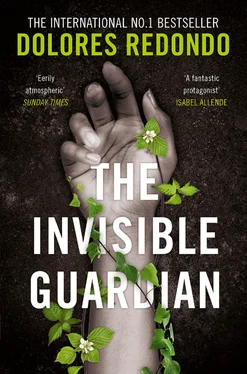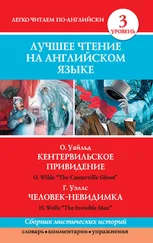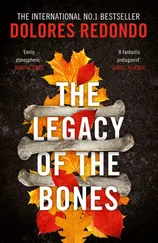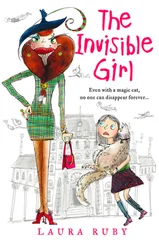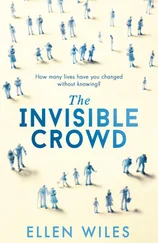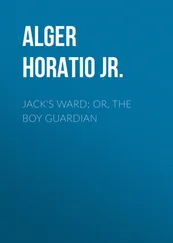Calle Braulio Iriarte ran along the northern bank of the River Baztán and was linked to Calle Jaime Urrutia by two bridges. The latter was the old main street until the construction of Calle Santiago, and it ran along the southern bank of the River Baztán. Crammed with spacious town houses, Calle Santiago was the starting point of the area’s urban expansion, along with the construction of the main road from Pamplona to France at the start of the twentieth century.
Amaia arrived at the main square feeling the wind between the folds of her scarf as she looked at the brightly lit esplanade, which no longer possessed half the charm it must have had in the previous century when it had mostly been used for playing pelota . She went over to the town hall, a noble building dating from the end of the eighteenth century which had taken Juan de Arozamena, a famous local stone mason, two years to build. On its façade was the familiar chequered coat of arms with an inscription reading ‘Baztán Valley and University’, and in front of the building, at the bottom left of the façade, was a stone known as a botil harri which was used for the type of pelota known as laxoa in which the players wore gloves.
She reached out and touched the stone almost ceremonially, feeling how the cold spread up through her hand. Amaia tried to imagine how the square would have been. The two teams of four pelotaris would have lined up facing each other, a little like a game of tennis with too many players and no net, each with a laxoa , or glove, instead of a racket to pass the ball amongst themselves. In the nineteenth century this game had fallen into decline. Even so, she remembered her father once telling them that one of his grandfathers had been a great fan of the game and ended up gaining a reputation as a glove maker thanks to the quality of the gloves he sewed himself, using leather that he also treated and tanned.
This was her hometown, the place in which she had lived for most of her life. It was a part of her, like a genetic trace, it was where she returned to in her dreams, when she wasn’t dreaming about the dead bodies, assailants, killers and suicides which mingled obscenely in her nightmares. But when her sleep was calm, she went back to those streets and squares, to those stones, to the place she had always wanted to leave. A place she didn’t know if she loved or not. A place that no longer existed, because what she was starting to miss now was the Elizondo of her childhood. However, now that she had returned almost sure there would be signs of definite change, she found things hadn’t changed that much. Yes, perhaps there were more cars in the streets, more streetlights, flower beds and little gardens which painted the face of the town like fresh make-up. But not so much that it prevented her from seeing that its essence hadn’t changed, that everything was still the same underneath.
She wondered whether the Alimentación Adela grocery shop or Pedro Galarregui’s shop in Calle Santiago were still open, or the shops like Belzunegui or Mari Carmen where her mother used to buy their clothes, the Baztanesa bakery, Virgilio’s shoe shop, or Garmendia’s junk shop on Calle Jaime Urrutia. And she knew that it wasn’t even this Elizondo that she missed, but rather the older and more visceral one, the place that formed part of her being and that would die in her only when she breathed her last. The Elizondo of harvests ruined by plagues, of children dying in the whooping cough epidemic of 1440. The Elizondo whose people had changed their customs to adapt themselves to a land that was initially hostile, a people determined to stay in that place near the church which had been the origin of the town. The Elizondo of sailors recruited in the square to travel to Venezuela in the employ of the traders belonging to the Royal Gipuzkoan Company of Caracas. The Elizondo of elizondarras who rebuilt the town after the River Baztán’s terrible floods and the times when it burst its banks. In her mind she recreated the image of the altar from one of the side chapels floating down the street along with the bodies of livestock. And of the residents lifting it over their heads, convinced that its presence in the middle of that quagmire could only be a heavenly sign, a sign that God hadn’t abandoned them and that they should endure. Brave men and women, forged thus by necessity, interpreters of signs from nature who always looked to the heavens hoping for pity from a sky that was more threatening than protective.
She turned back along Calle Santiago and went down as far as Plaza Javier Ziga, where she set off across the bridge and stopped in the middle. Leaning on the low wall, she murmured as she ran her fingers over the rough stone where its name, Muniartea, was engraved. She stared into the blackness of the water that carried its mineral aroma down from the peaks. There was still a commemorative plaque in Calle Jaime Urrutia on the house that had belonged to the Serora , the woman who had been responsible for looking after the church and the rectory, which marked the point reached by the flood waters on 2 June 1913. That same river was now witness to a new horror, one that had nothing to do with the forces of nature, but rather with the most absolute human depravity, which turned men into animals, predators who mingled with the righteous in order to be able to approach them, to be able to commit the most deplorable act, giving free rein to desire, anger, pride and the insatiable appetite of the most disgusting gluttony.
A shudder ran down her back, she snatched her hands from the cold stone and put them in her pockets with a shiver. She took one last look at the river and set off home as it started to rain again.
Amaia could hear James and Jonan’s voices mingling with the omnipresent murmur of the television as they chatted in Aunt Engrasi’s little living room. It sounded like they were sitting separately from the six old ladies who were making a real din as they played poker at a hexagonal table covered with green baize that wouldn’t be out of place in a casino. Her aunt had had it brought all the way from Bordeaux so that honour and a few euros could be gambled on it each afternoon. When they saw her in the doorway, the two men moved away from the gaming table and came over to her. James gave her a quick kiss as he took her hand and led her to the kitchen.
‘Jonan’s waiting for you, he needs to talk to you. I’ll leave you alone.’
The deputy inspector came forward and handed her a brown envelope.
‘Chief, the report on the samples has arrived from Zaragoza, I thought you’d want to see it as soon as possible,’ he said, looking round Engrasi’s enormous kitchen. ‘I thought places like this didn’t exist anymore.’
‘You’re right, they don’t, believe me,’ she replied, pulling a sheet of paper out of the envelope. ‘This is … enlightening. Listen, Jonan, the hairs we found on the bodies come from wild boar, sheep, foxes and, although they’re still waiting for confirmation on this, possibly a bear, although that’s not conclusive; furthermore, the epithelial fragments we found on the string are, wait for it, goatskin.’
‘Goatskin?’
‘Yes, Jonan, yes, we’ve got Noah’s fucking ark here, I’m almost surprised they haven’t found elephant snot and whale sperm …’
‘Any human traces?’
‘Nothing human; no hair or fluids, nothing. What do you think our friends the forest rangers would say if they could see this?’
‘They would say there’s nothing human because it isn’t a human. It’s a basajaun .’
‘In my opinion, that guy’s an idiot. As he himself explained, basajaun s are supposed to be peaceful creatures, protectors of the life of the forest … He said himself that a basajaun saved his life, so you tell me how that fits in with our story so far.’
Читать дальше
